
The inability of popular social media platforms to protect data has made many users consider alternative social media platforms that value their privacy.
MeWe emerged as a better option where users can connect without compromising their data and privacy.
With the growing user base, social media platforms are changing their core functionality. They are not limited to connecting global users but giving businesses ample opportunities to showcase and promote their brands.
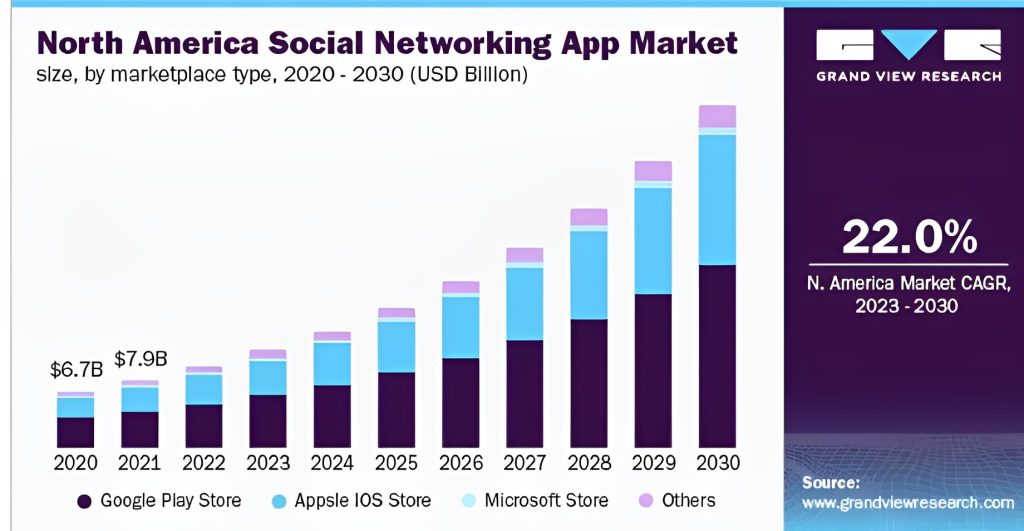
Businesses and entrepreneurs seeking a profitable opportunity can tap into the social networking app market by considering developing an app similar to MeWe.
Let’s explore more about the MeWe app, its essential features, and the cost estimation for developing the same kind of app.
What Is The Mewe App?
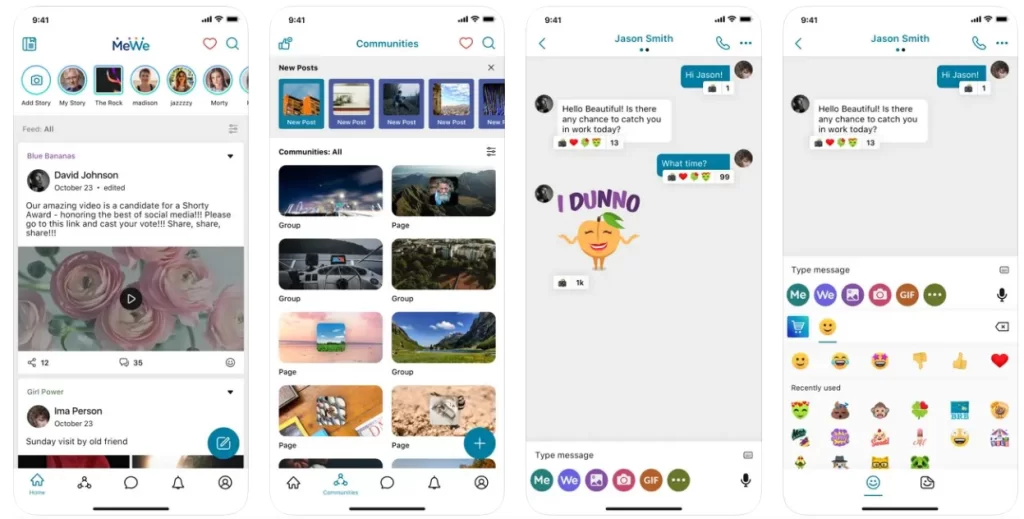
Mewe, a next-gen social network site, is an alternative to popular social network platforms like Facebook and Twitter. The Mewe platform is well-recognized for its business approach, which excludes advertising, targeting, promotions, and the manipulation of news feeds.
Internet entrepreneur Mark Weinstein founded the platform and is owned by a company called Sgrouples. In a Rolling Stone interview, Weinstein identified himself as “one of the men who developed social media.”
In 1998, he launched SuperGroups, a pioneering social networking website that was shut down in 2001 by its supporters. Recently the platform has collaborated with Frequency (a Layer 1 blockchain network) to decentralize its social network.
Here are more details about the app.
| Founded on | May 12, 2012 |
| Category | Social Networking |
| Founded by | Mark Weinstein and Jonathan Wolfe |
| Owned by | Sgrouples, Inc. |
| Headquarters | Culver City, California, U.S. |
| CEO | Jeffrey Scott Edell |
| Available on | Web, Android & iOS |
| App downloads | 5M+ |
| App ratings | 4.3 |
How Does The MeWe App Work?
The app’s working can be explained by the set of features and functionalities which can be accessed in free and paid ways. The app comes in two versions, i.e., Mewe and Mewe Pro.
The free version offers the following features to its users:
- Authentic relationships with one’s family, friends, and those who have similar interests
- There are open and closed groups for connecting with people to share their opinions
- Messages and posts that disappear after 24 hours
- Pages for fans and companies
- Instant messaging and chat function for both individual and group discussions
- Newsfeeds tailored to close friends
While its paid version offers the following features to its premium users:
- Real-time voice and video conversations, including group calls
- Customized emoji and sticker collection
- Cool and entertaining camera filters
- Making use of the camera to generate GIFs
- Personal and social cloud
- Profiles that are unique and personalized
The Business Model Of The Mewe App
There are multiple revenue streams for Mewe. Mewe is a subscription-based social media platform where users can join and use it for free but need to pay an additional fee to access advanced features on the platform.
There is a need to pay $4.99 monthly to access premium features like voice and video calling, extra cloud storage, and custom emojis.
Similarly, the Mewe app lets other businesses access their monthly tools ranging between $1.44 to $14.99.
Unlike Facebook, Mewe doesn’t offer the creation of a free business page and charges upto $1.99 as subscription charges to create the business page for the first time.
Moreover, the platform has also collaborated with Google and Microsoft to allow users to share their work and documents with their collaborators and team with Google Docs and Microsoft Office 365.
Must-Have Features For An App Like Mewe
Consider adding the following features for building a Mewe-like app:
1. Profile creation
Enable your users to create their profiles on your platform by enabling them to enter their details such as e-mail address, name, website, birth date, phone number, and other required details.
2. Authorization

Implementing authorization will help you secure your users’ privacy and data and make your platform more trustable. The authorization will enable users to sign up and login into your platform through their phone number and e-mail address.
Additionally, the authorization will be helpful for users to recover or reset their password on your platform.
3. Search and Be Friend
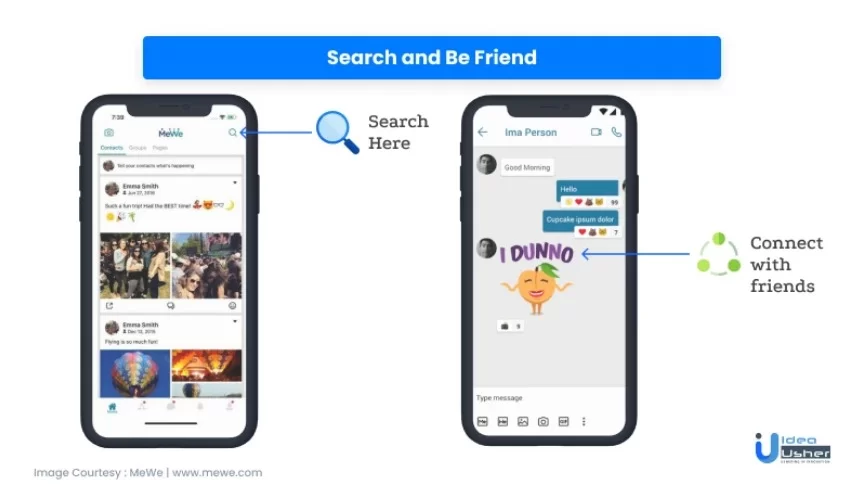
Enable search functionality to your platform to allow users to search for their personal contacts, content, and posts they are interested in. Moreover, consider adding filters to the search feature to narrow the search results and make them more relevant.
4. Messaging
As a social media platform, it is crucial to allow your users to communicate by offering them a proper communication channel, such as text messaging.
Additionally, you can allow your users to send media files, stickers, and emojis through the messaging functionality to make communication more engaging.
5. User interface
In addition to implementing essential features, app design is another important aspect that must be taken care of because the user interface is how your users will access your app and its functionalities.
6. Custom social cloud
The custom social app comprises different groups where the personal social cloud offers each member.
The custom social cloud will enable users to automatically save, publish and record their video call with other users. It can organize them in the cloud storage associated with their profile account.
7. Control over permissions
In a world of fast-growing digitalization, users are more concerned with their privacy and data. Therefore it becomes crucial for you to provide the rights to users to let them manage and control what data should be collected and by whom.
The users should also be facilitated with an option to remove themselves from the search directory by offering them an invisible mode to hide from other users.
8. Tagging
The feature is valuable as it allows users to filter and organize all the content they receive or distribute. The users can organize varieties of content into multiple categories to ease out search and sort out content and post on your platform.
9. Journals by MeWe
The journal feature enables users to sort, tag, save, rearrange, and organize their stories and create a timeline of memories. However, stories featured through the timeline are valid for 24 hours.
10. News feed
The news feed is not a unique feature, but it must be included if you are considering creating an app. The news feed is a live feed about activities in your circle, including friends, people, pages, family, etc.
11. Voice and video calling (dual camera)
A premium feature where users can access unlimited IP calling in invoice and video mode. The feature lets users connect with multiple users simultaneously in a single voice video call.
The app also facilitates a live streaming facility with a dual-camera video calling feature, allowing users to simultaneously communicate with front and rear cameras.
12. Groups
The app enables premium subscription users to create groups for inviting people with shared interests to have an open conversation, sharing thoughts, ideas, visions, etc. You can also enable users to implement content moderation policies for smooth and easy interactions.
Top Competitors Of The Mewe App
Explore the top alternatives to get more ideas for creating social platforms with similar features and functionalities.
1. Mighty Networks
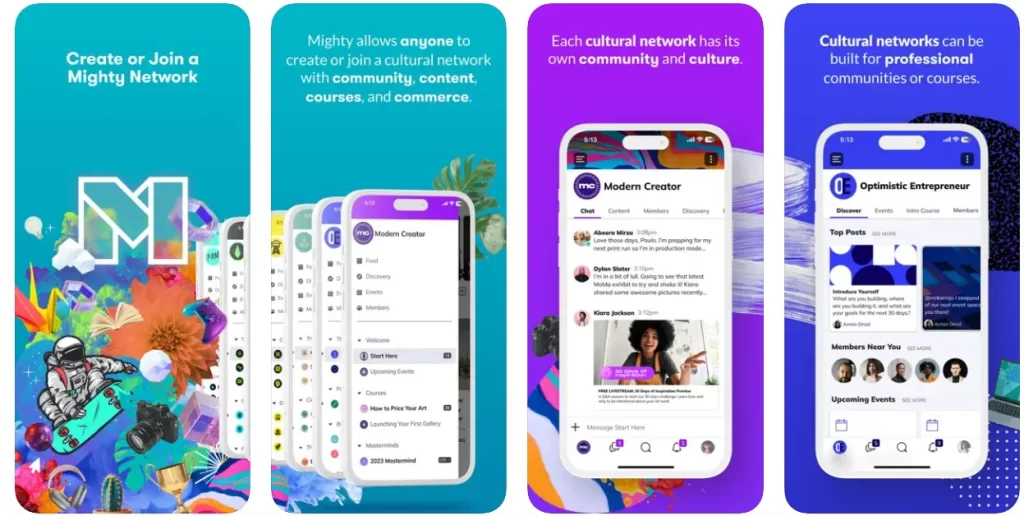
A social network platform where entrepreneurs, creators, and brands can build their digital communities, courses, and membership. Mighty Networks enables users to start a live stream of events, establish entertaining activities, and much more.
| Founded in | 2010 |
| Available on | Web, Android & iOS |
| Founded by | Gina Bianchini |
| App downloads | 1M+ |
| App rating | 4.3 |
| Headquarters | Palo Alto, California, United States |
2. Mastodon
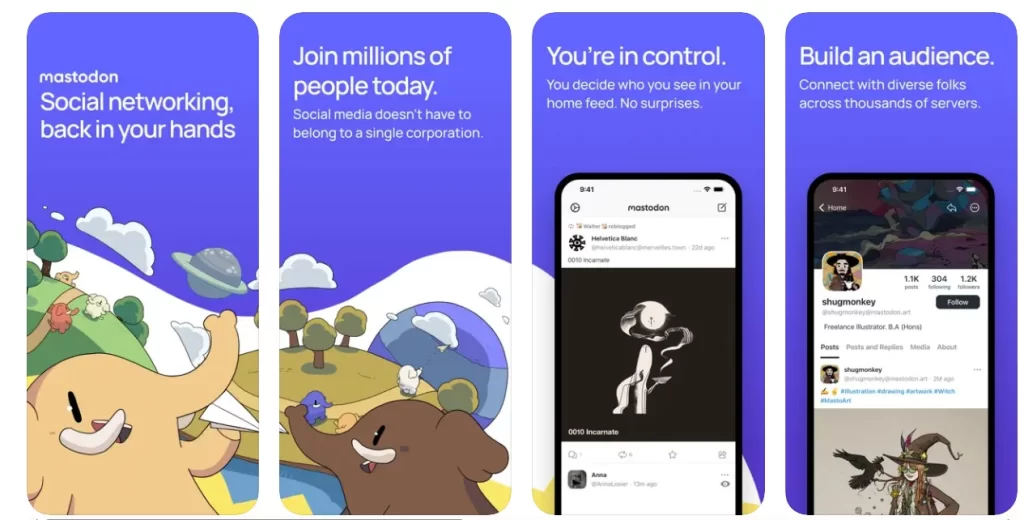
A one of the largest decentralized social networks where anyone can join and can create their profiles and can express themselves with custom emojis, videos, GIFs, and many other available options.
Instead of a single website, Mastodon is a network of millions of users from independent communities who can interact with each other. However, each community has had their guidelines that users need to comply with to keep its members safe and prevent any spamming activities.
| Founded in | 2016 |
| Available on | Web, Android & iOS |
| Founded by | Eugen Rochko |
| App downloads | 1M+ |
| App rating | 3.4 |
| Headquarters | Ellijay, Georgia, United States |
3. Locals

The platform is designed for independent creators where they can publish their content along with engaging and earning revenue from their supporters.
The app believes that creator should be their publishers, and they provide them with tools for publishing and operating their content and posts. The creators also create their guidelines on their page, where they are offered a list of valuable tools that can help them to manage their community.
| Founded in | 2019 |
| Available on | Web, Android & iOS |
| Founded by | Dave Rubin and Assaf Lev |
| App downloads | 100k+ |
| App rating | 4.4 |
| Headquarters | Miami, United States |
4. Minds
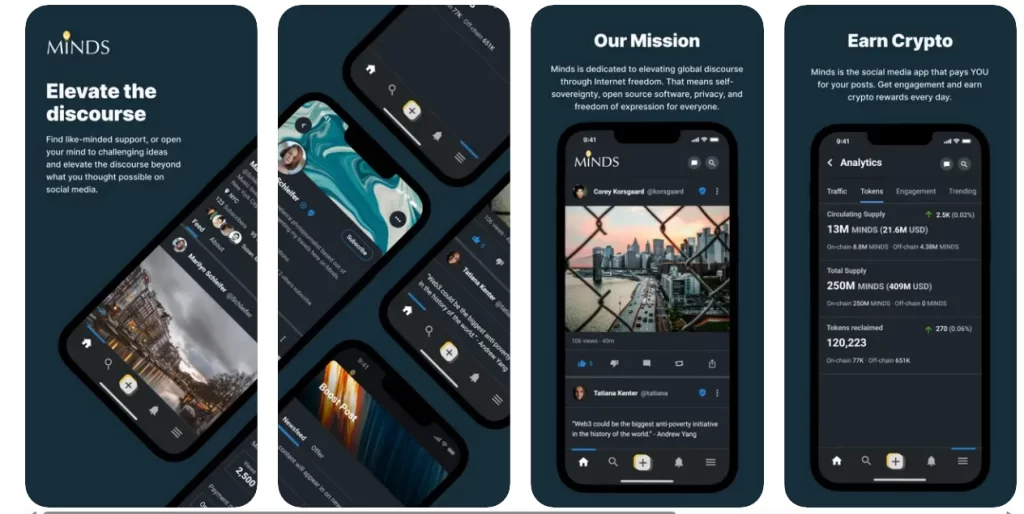
Mind is an open-source social network that allows freedom of speech and is integrated with cryptocurrency and blockchain technology. The platform enables its users to speak freely, protects their privacy and crypto rewards, and facilitates them with greater transparency and accountability.
Users can earn cryptocurrencies in various ways, such as when someone subscribes or likes, shares, or comments on the content of the creators.
| Founded in | 2011 |
| Available on | Web, Android & iOS |
| Founded by | Bill Ottman |
| App downloads | 500K+ |
| App rating | 4.7 |
| Headquarters | Glastonbury, Connecticut, United States |
5. Zingr
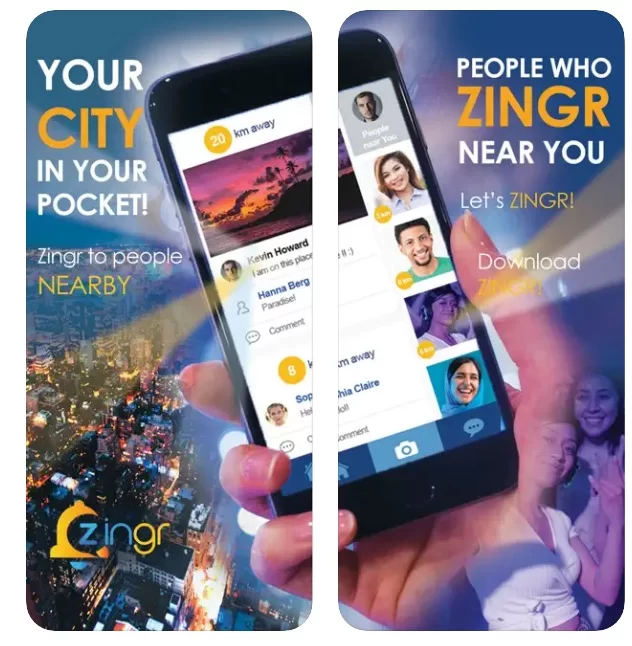
A location-based social networking platform where users can explore nearby people along with discovering their photos, posts, and stories.
However, the distance is limited to 1 KM and respects users’ privacy by not sharing their live location. The platform also offers hashtags where users can connect with other nearby people with the same hobbies.
| Founded in | 2019 |
| Available on | Web, Android & iOS |
| Founded by | Kęstutis Gedaitis |
| App downloads | 100K+ |
| App rating | 2.4 |
| Headquarters | Lithuania |
Technology Stack To Develop An App Like Mewe
The technology stack selection will depend on various factors, such as the platform you are considering to launch your application and the development team’s experience using specific tools, frameworks, APIs, etc.
Hire an app development company to select appropriate tools for your project. The most recommended tech stack for a MeWe-like app development is as follows:
| Platform | Android | iOS | Hybrid(Android and iOS) |
| Frontend Framework | Angular | Express-JS | React |
| Backend Framework | Django | Laravel | Phalcon |
| Programming Languages | Java and Kotlin | Objective C and Swift | Ruby On Rails |
| Database Development | MySQL | PostgreSQL | NoSQL |
Factors Influencing The Cost Of A MeWe-Like App Development
Understanding different factors that can affect the cost of building an app can help you estimate the app development cost for your project.
1. App Type
Determining the app type will involve multiple factors, such as its app development approach, whether hybrid or native, and market segments, such as public, professional bodies, or enterprises.
The list of features you want to implement and categorizing them into free-to-use and premium features, deciding whether to add in-app purchases are some other factors that determine the app types.
2. Development Team Structure
An ideal team structure comprises professionals and app developers, including project managers, UI/UX designers, marketers, and Q&A testing engineers.
Employing a development company with years of experience and expertise in building social networking platforms is advisable. Access their portfolios with different apps they have developed for their past clients.
Here is more detail about hiring an app development company in 2023.
3. Location Of The Team
The team’s location is another important aspect that decides an app development fee based on their hourly rate. The development team, based on their location, comprises the following app development hourly rates:
| Location | Hourly Rates |
| Western Europe/UK | $160-$225 |
| North America | $150-$200 |
| The Middle East | $100-$115 |
| Eastern Europe | $125-$140 |
| Australia/New Zealand | $90-$125 |
| Singapore | $90-$125 |
| India | $55-$80 |
The variation in hourly rate is due to having no similarity in the cost of living for the different locations.
4. Tech Stack
The selection of a technological stack will be another factor that will influence the pricing of your app development budget.
Based on your app development types, whether native or hybrid, each development type will require different app development tools and technologies to build the same kind of app.
Conclusion
Adopting the business strategy of social media apps that respect users’ data and privacy is a way to stand out among the competition.
As many social media platforms have changed their policies that compromise users’ privacy, many users opt for privacy-oriented social media platforms. When building an app like MeWe, you must focus on its core features, UI designs, business, strategy, marketing, and more. However, all these skills need years of experience and expertise that only a reliable app development company can have.
If you are juggling multiple business ideas and are seeking expert guidance in developing and promoting social media platforms, you can contact Idea Usher.
You can leverage our expertise and experience in building custom software solutions where we can turn your app idea into reality. Our team comprises highly skilled developers, designers, and project managers that work together to ensure your app will get delivered on time, within budget, and meets all requirements.
We at Idea Usher follow a systematic development process from defining the project scope to launching your social media platform to your targeted market. Contact us today and learn more about how we can help you start and expand your business.
Contact Idea Usher
Email:
Phone:
FAQ
Q. How much does it cost to develop an app like MeWe?
A. Multiple factors can decide the cost to develop an app like such as app development type (Hybrid or Native), team structure, tech stack, and location of the team, etc.
Q. How does the MeWe app work?
A. The app allows users to post messages on their timelines, share them among their networks, such as friends and families, and join and create groups in private and group chats.
Q. What are some unique features of MeWe?
A. My Cloud, Unique profiles, Voice integration, Dual-camera videos, Universal tagging, and Permission control are some of the unique features.
Q. What is MeWe?
A. MeWe is a social networking platform with essential features on popular social media platforms. The platform is well known for its business model, with no promotions, ads, targeting, or news feed manipulation.









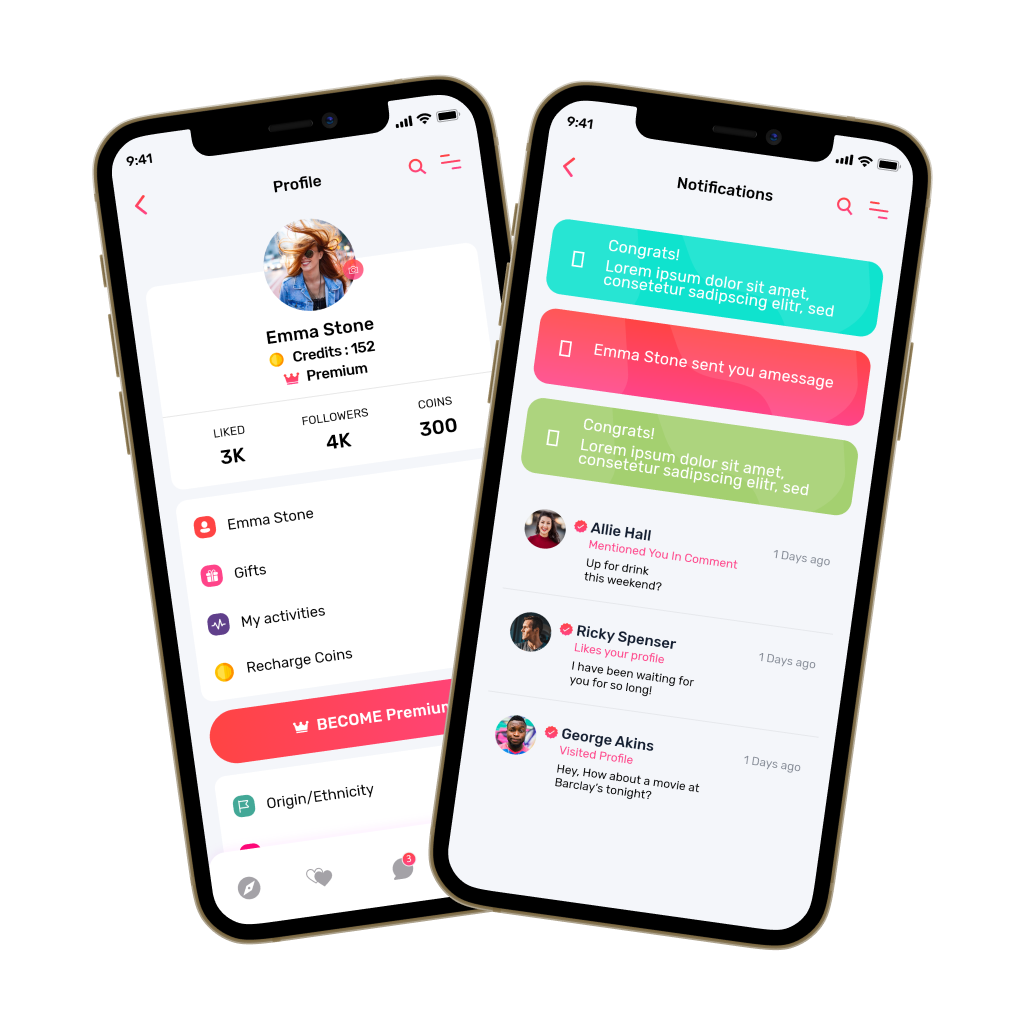

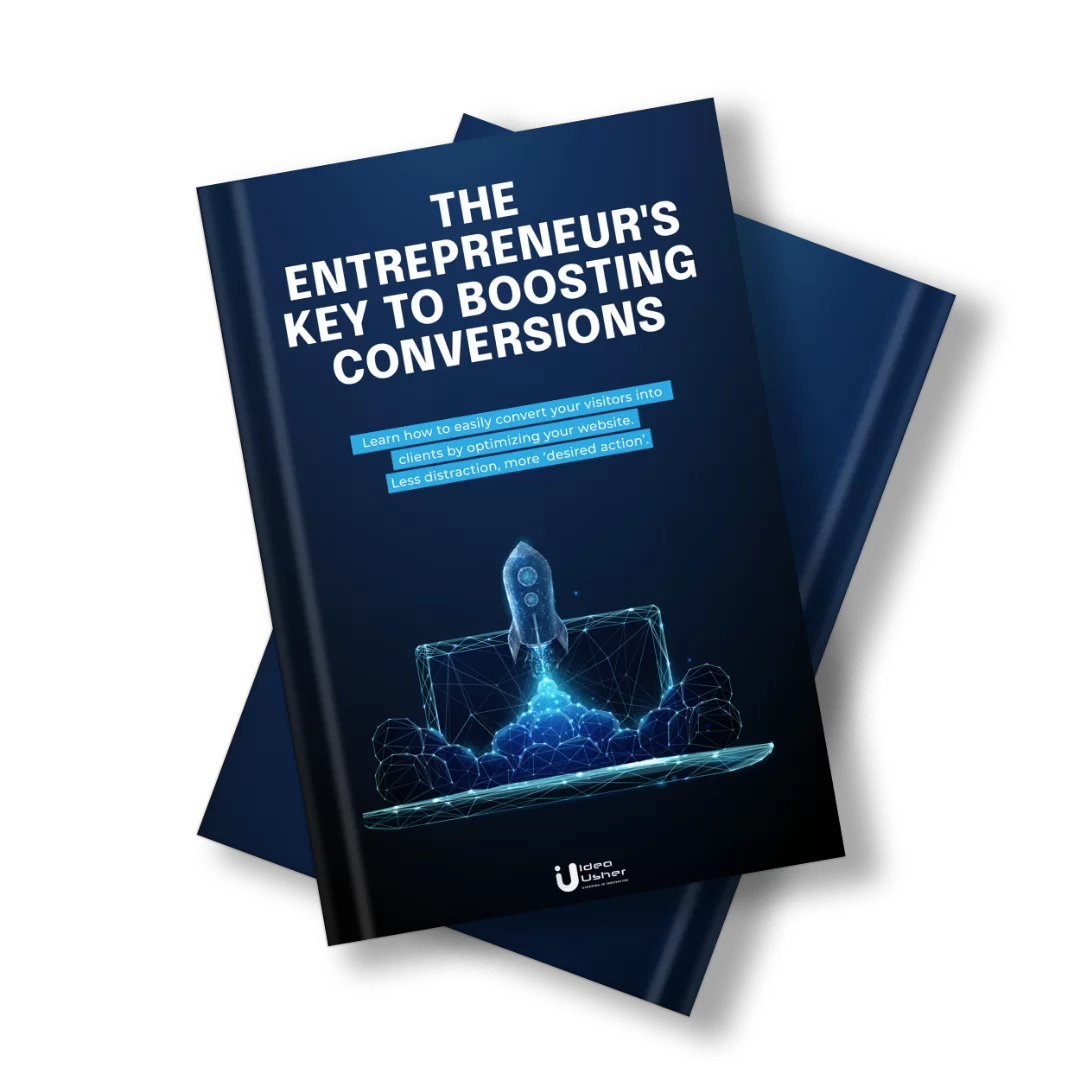
Gaurav Patil